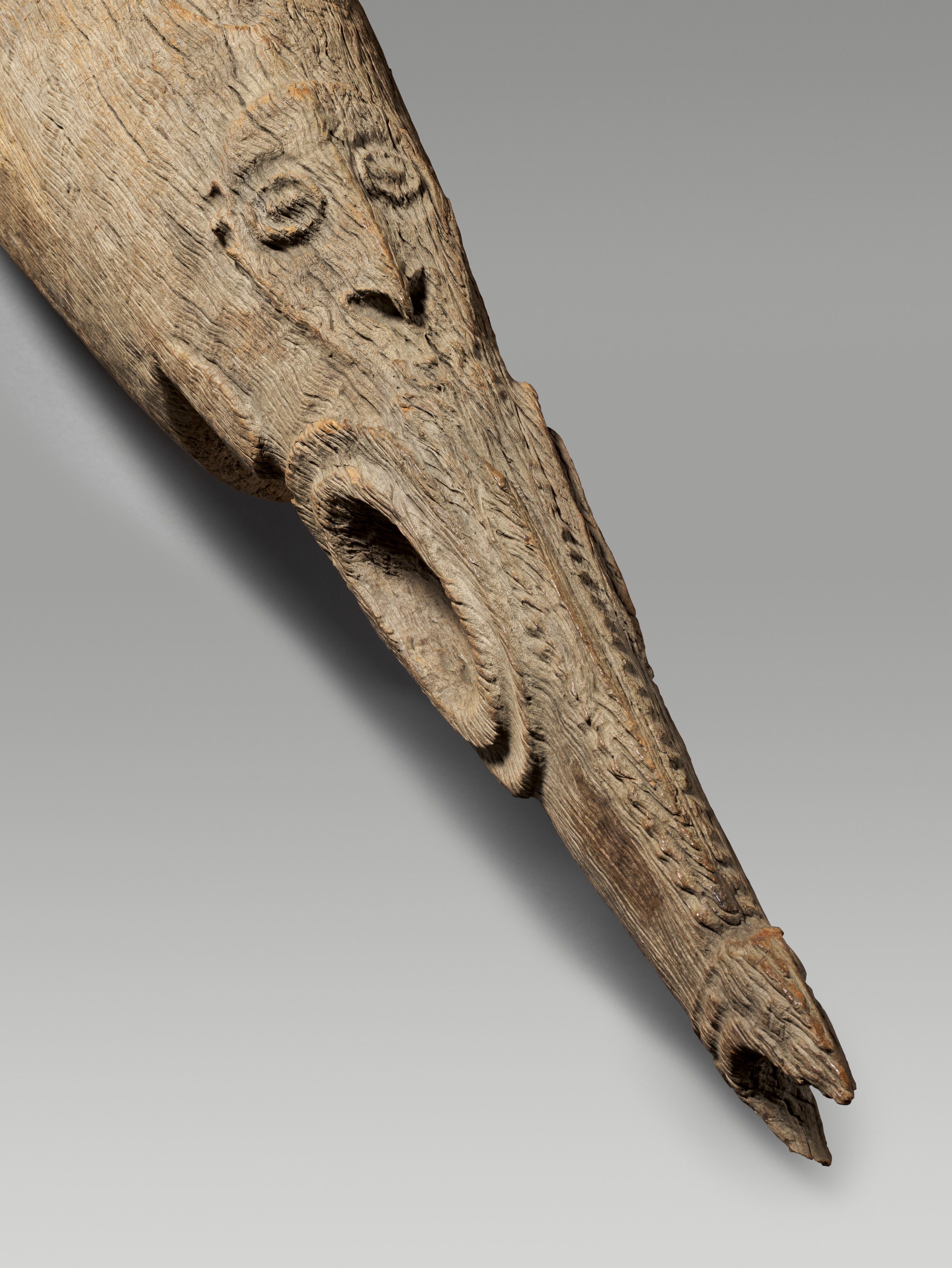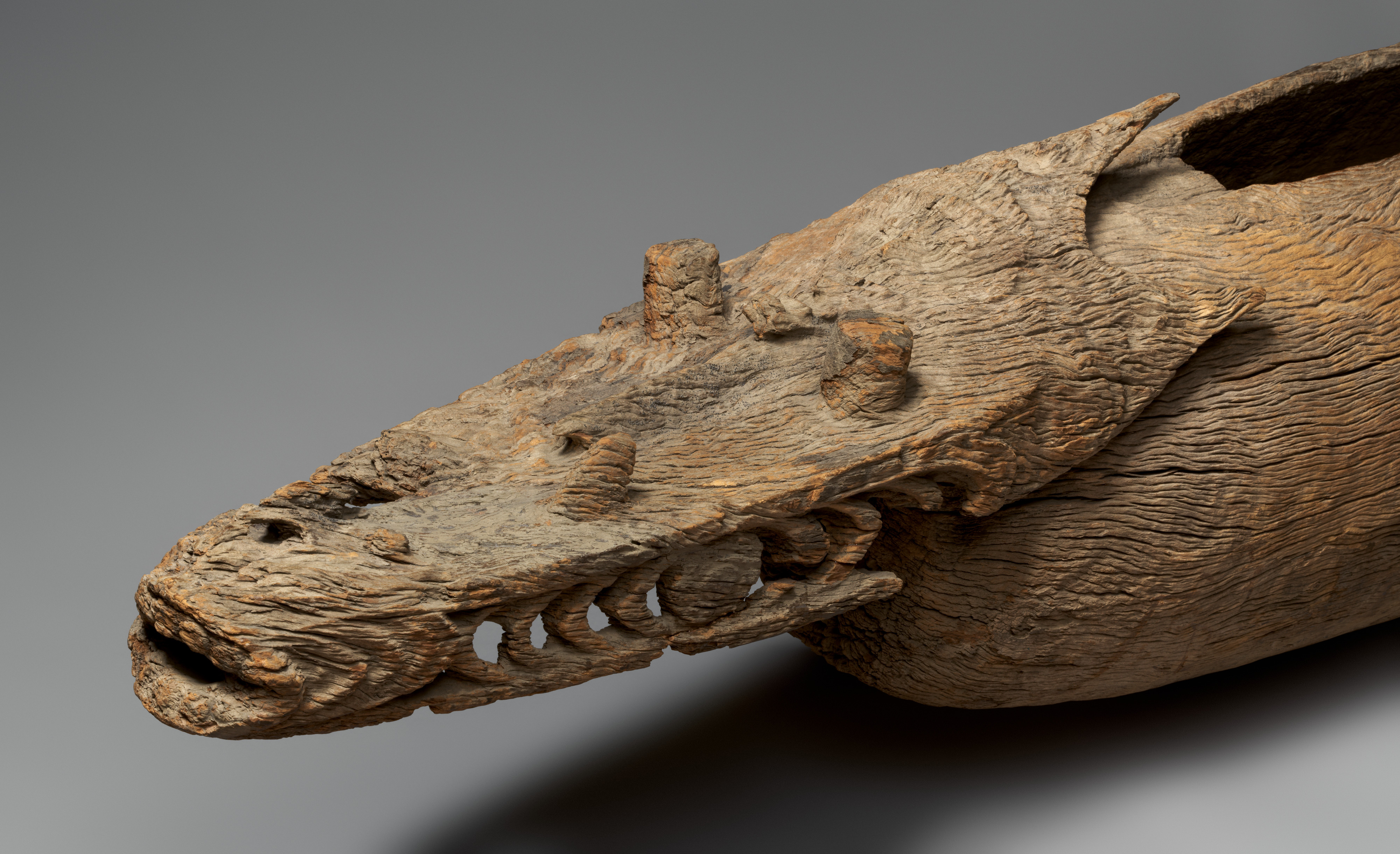Sacred Slit Gong (Waken)
Not on view
In many parts of New Guinea, the sounds produced by certain types of musical instruments, played during ceremonies, are said to be the voices of supernatural beings. Among the Iatmul and other Sepik peoples, the most important musical instruments were sacred flutes and slit gongs—percussion instruments carved from massive logs, hollowed out to create a resonating chamber with a narrow slitlike aperture, whose edges are struck with wood beaters to produce a deep, sonorous tone. The ends of Iatmul slit gongs are typically embellished, as here, with ornate finials depicting totemic animals or other clan emblems, while the sides of many examples are adorned with geometric carvings. Large slit gongs are a prominent feature of Iatmul men's ceremonial houses (nggaigo), where they are sometimes arranged in pairs running longitudinally down the length of the earthen floor of the open understory of the structure. Played to accompany a variety of ritual performances and other events, such drums, though used exclusively by men, are readily visible and relatively public objects.
Nggaigo, however, often house, or housed, groups of sacred slit gongs reserved for secret ceremonies. Believed to be a manifestation of waken, the most powerful of all supernatural beings, such sacred slit gongs, also called waken, were kept, together with other sacred objects and musical instruments, within the enclosed upper story of the ceremonial house, concealed from the view of women and children. The present slit gong forms part of a complete ensemble of such sacred musical instruments, comprised of two slit gongs and two percussion planks (horizontal boardlike objects struck to produce a musical tone) now in the Museum's collection. All four are carved in the form of supernatural catfish (recognizable by the three spines that project from the back of the head) portrayed with long, crocodile-like jaws.
Such ensembles form, or formed, the central elements of an extensive secret ritual, also known as waken, performed only by senior male elders. During the rites, the sacred slit gong ensemble was played continuously day and night for periods as long as several months by relays of percussionists, each subsequent performer taking the moving drum beater from the hand of his predecessor so that the rhythm remained uninterrupted. While the slit gongs were being sounded, the community had to remain silent and people were forbidden to argue, shout, or break firewood. At the conclusion of the rites, the old men, impersonating the waken, emerged from the nggaigo and danced before the village women.
Due to rights restrictions, this image cannot be enlarged, viewed at full screen, or downloaded.
This artwork is meant to be viewed from right to left. Scroll left to view more.





